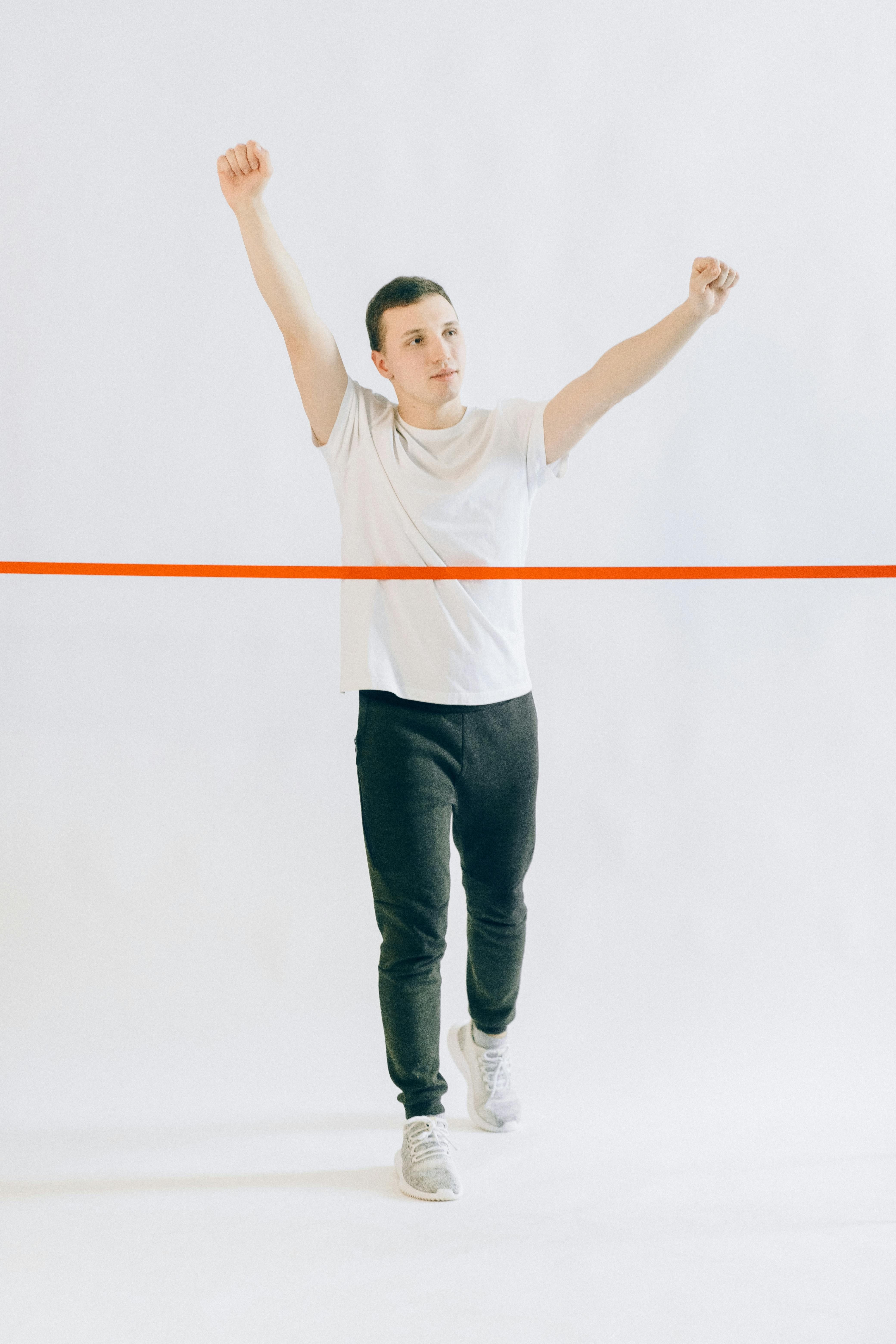Achieving Better Health Through In-Place Running: Does It Really Work?
Let's Talk About Running in Place:
Running in place, or simply jogging where you stand, may seem like a peculiar exercise choice. But don't underestimate its potential to boost your fitness and overall health.
So, if you ever find yourself wondering whether a stationary workout could be useful, let's run through the benefits, drawbacks, and tips for giving running in place a whirl!
All the Benefits of Running in Place
Running in place can function as a viable, if not conventional, aerobic workout. Regardless of your living quarters or office cubicle, you can still reap numerous health benefits.
Here's what running in place delivers:
- Improved posture: According to a 2015 study, running in place encouraged better posture, primarily when the abs are engaged[1].
- Calorie burning: Physical activity, like running in place, torches calories. This means steady running in place can aid in maintaining a moderate weight.
- Enhanced cardiovascular health: Whatever raises your heart rate and gets your blood pumping will inevitably improve cardiovascular health[2]. You'll also experience boosted lung capacity and better blood sugar levels.
- ** circulation: Any movement – whether you're breaking it down like Tube Man** or jogging where you stand – elevates circulation, leading to a healthier bod.
- Muscle strengthening: The majority of your core, hamstrings, quadriceps, ankles, and leg muscles will feel the burn when you run or jog in place. For an extra strength training boost, try wearing ankle weights.
Although there isn't much research on running in place specifically, science has shown that engaging in exercise, raising your heart rate, and sweating it out will unleash a wealth of health and fitness advantages.
The Difference Between Running in Place and Regular Running
It's obvious that running in place and running outside or on a treadmill aren't identical activities. So, what sets running in place apart?
- Different muscle groups: Running in place skips the forward propulsion of conventional running. While this minor variation could help strengthen ankles and lower legs, glutes and hams might not receive the same focus. Additionally, without an incline, some muscle-building benefits are missed.
- Knee and hip stress: Running in place instead of forward could place extra pressure on your knees and hips[3]. Lessen the impact by jogging on a soft surface like a yoga mat or carpet.
- Form challenges: Many of us have practice jogging on a treadmill or hitting the pavement. Proper form for running in place might not come as easily for those less experienced. However, practice makes perfect!
- Boredom: Let's admit it: Running in place can get monotonous compared to the scenery change during outdoor runs or the variety offered by a treadmill, complete with a robot trainer.
Jogging in Place - A Cousin to Running in Place
Jogging in place can offer a decent workout with similar advantages as running on a treadmill or outside.
Here's how jogging in place aligns:
- Calorie burning
- Improved posture
- Boosted heart health
- Improved circulation
- Muscle-building
How to Run in Place Properly
Always warm up your muscles with a few stretches or slower exercises before starting, such as jumping jacks, mountain climbers, knee kicks, or lunges.
When ready, follow these steps to run in place:
- Simultaneously lift your right arm and left foot.
- Raise your right knee as high as your hips (speed-walker style).
- Switch to the opposite foot quickly, lifting your right foot to hip height at the same moment.
- Synchronize left and right arm movements as you run.
- Keep it up!
Try a 10-minute run followed by rest or additional exercises (push-ups, lunges, burpees, etc.).
Alternatively, create an interval training workout:
- Jog in place for 4 minutes.
- Run faster in place for 2 minutes.
- Perform 1 minute of bodyweight exercise (i.e., push-ups, leg raises, planks).
- Jog in place for 3 minutes.
- Rest for 1-2 minutes.
The Length of Running in Place
Listen to your body. If you aren't experiencing pain or strain, feel free to run in place for as long as you'd like.
The Centers for Disease Control and Prevention (CDC) recommends at least 150 minutes per week of moderate exercise or 75 minutes per week of vigorous exercise for optimal health.
Running in place could be the perfect solution for squeezing in 10-minute sweat sessions without leaving the office. Start with shorter sessions, say 10-20 minutes, and gradually build up.
Running in Place for 30 Minutes
Certainly, running in place for half an hour is no problem.
As long as your muscles and joints aren't complaining, go ahead and run in place for 30 full minutes. It can serve as a convenient daily exercise in a pinch!
Risks of Running in Place
If you're just starting out with fitness, recently overcame an injury, or have personal health concerns, consult with your physician or a certified physical therapist before you begin.
Running in place may put pressure on certain muscles and joints, such as those in the:
- hips
- shins
- ankles
Avoid problems by maintaining proper form and slowly building up your routine.
Running in Place or Walking?
Walking is an excellent workout – just ask UNK.
Walking and running in place are both viable options for fitting daily movement into your routine. Depending on your fitness goals, one workout might be preferable over the other.
Walking is gentler on your joints and may be more suitable for those with knee or ankle problems or other injuries. On the downside, you'll achieve fewer cardiovascular and muscular rewards compared to running in place or regular running.
Ultimately, anything is better than sitting all day!
tl;dr
Running in place might not replace your gym sessions, Pilates classes, or annual marathon, but it still presents fitness advantages.
This space-saving exercise can enhance cardio health, burn calories, and build strength. Connected exercises like jumping jacks, lunges, and burpees can diversify your fitness routine and help you stay fit – even if you can't leave your apartment.
- Regarding Bruce, if he engages in running in place regularly, he might observe improvements in his posture, cardiovascular health, and circulation, as well as muscle strengthening in his core, hamstrings, quadriceps, ankles, and leg muscles.
- For those experiencing prob with regular running due to limited space or time, incorporating running in place as a form of interval training could offer similar benefits, such as calorie burning, improved posture, boosted heart health, and muscle-building, while also being easy to do at home or in an office setting.
- Ankle weights can be worn during running in place as a means to increase the intensity of the workout and provide an extra strength training boost to the leg muscles.




